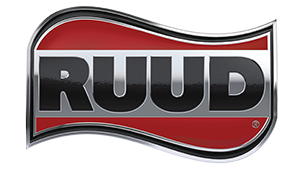Installing a furnace in your home is a significant decision that impacts your comfort and energy efficiency. Whether you are building a new home or replacing an old system, it’s important to consider several key factors to ensure you make the best choice. Our professionals are here to help you navigate the process and ensure a successful heating installation.
Assessing Your Heating Needs
Understanding your home’s heating needs is the foundation of a successful furnace installation. This process begins with a thorough evaluation of various factors that influence the system’s efficiency and effectiveness. Our professionals start by assessing the size and layout of your home. Larger homes require furnaces with higher capacities to ensure even heating throughout all rooms.
Another crucial aspect is the insulation levels in your home. Proper insulation helps retain heat, reducing the workload on your furnace and leading to lower energy consumption. Homes with poor insulation might need a more powerful system to meet heating requirements. Additionally, we consider the local climate conditions. Colder regions demand more robust heating systems to maintain comfortable indoor temperatures during winter months.
Our technicians also review existing ductwork, as it plays a significant role in the distribution of warm air. Well-maintained ducts ensure efficient airflow, while outdated or damaged ducts might need repair or replacement. By thoroughly assessing these elements, we can recommend the most suitable furnace and ensure your home remains warm and comfortable throughout the year.
Choosing the Right Furnace Type
Selecting the perfect furnace for your home involves understanding the different types available and their respective benefits. Our professionals help you navigate this decision by explaining the primary types of furnaces: gas, electric, and oil. Each type has unique features that may suit different heating needs and budgets.
Gas furnaces are a popular choice due to their efficiency and lower operating costs. They use natural gas to generate heat, making them a cost-effective option for many homeowners. Electric furnaces, on the other hand, are easy to install and maintain. They are an excellent choice for areas with mild winters or homes where a gas connection is not feasible. Oil furnaces, although less common, provide efficient heating and are a viable option in regions where oil is more accessible than gas.
We also consider the furnace’s energy efficiency rating. High-efficiency furnaces have better performance and can lower your energy bills over time. Our technicians guide you through these options, helping you choose a furnace that meets your specific needs and complements your home’s heating requirements. By selecting the right type of furnace, you are setting the stage for an efficient and long-lasting heating system.
Importance of Professional Installation
Professional installation is critical to the efficiency and longevity of your furnace. Our technicians ensure every aspect of the furnace installation is executed with precision. Proper installation maximizes the system’s performance, reduces risks like gas leaks, and ensures safe and efficient operation. Attempting to install a furnace independently can lead to costly mistakes and potential hazards.
Our professionals start by inspecting your home’s layout and existing heating architecture. This helps them determine the best placement for the new furnace, ensuring efficient airflow and heat distribution. They also assess the compatibility of the new system with your current ductwork and electrical setup.
Furthermore, professional installation includes proper calibration of the system. This ensures that your furnace operates at peak efficiency, which can help you save on energy costs. Our technicians also provide valuable advice on maintaining your furnace, which can help extend its lifespan. By relying on our experts, you can be confident that your furnace is installed correctly and safely.
Maintenance and Longevity Considerations
After installation, regular maintenance is essential for keeping your furnace in optimal condition. Consistent upkeep helps prevent problems and prolongs the life of your heating system. Our professionals recommend scheduling annual inspections to catch issues early and perform necessary furnace repairs.
Maintenance tasks include checking the system’s components, such as the heat exchanger, burners, and ignition system. Cleaning these parts and replacing worn-out components can prevent breakdowns and improve efficiency. Our technicians also inspect the ductwork for leaks or blockages that could impede airflow and overwork the furnace.
In addition to routine maintenance, consider the need for furnace replacement as your system ages. Older furnaces may become less efficient and more prone to breakdowns, making heating repair less cost-effective over time. Replacing an outdated furnace with a modern, energy-efficient model can enhance comfort and save money on energy bills.
Conclusion
Selecting, installing, and maintaining a furnace involves several critical steps that ensure your home remains warm and energy-efficient. Assessing your heating needs helps determine the right system size and capacity for your home. Choosing the right type of furnace ensures it fits both your comfort requirements and budget. Relying on professional installation guarantees that your system is set up correctly for optimal performance and safety. Finally, regular maintenance keeps your furnace in top shape, prolonging its lifespan and efficiency.
Making informed decisions about your heating installation can significantly improve your home’s comfort and energy savings. Trusting our professionals at Pacific Heating for your furnace installation in San Luis Obispo ensures you receive expert guidance and top-notch service. Contact us today to schedule a consultation and learn how we can help you achieve a more comfortable and efficient home!









